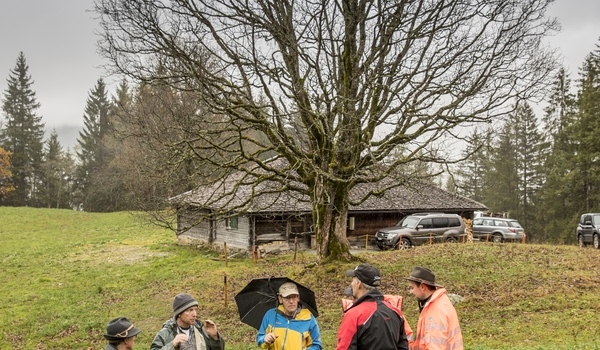Focusing on Habitat Enhancement
On the Road with Martin Lutz
When Martin Lutz is on the road, nothing escapes his eye: he sees clods of earth lying upside down, black or snow grouse that seemingly do not mind the noise of construction work, and embankments and forest clearings that could be made more natural. «Habitat enhancement» is what the trained agronomist calls it. One of his biggest projects is the V-Cableway construction site between Grindelwald Grund, the Eigergletscher and Männlichen.
The Jungfrau Railways’ V-Cableway construction is special – «in terms of size, dimensions and also the stakeholders involved», explains Lutz. The 64-year-old has been involved in the project since 2008 and, together with partners, wrote the environmental impact report for the construction project. Since January 2018 he has been responsible for environmental construction supervision.
His main tasks include giving final approval for construction work, preparing the environmental construction report and monitoring the success of compensation measures. He looks at how the vegetation develops and how the «visible and invisible» animals are coping with the new circumstances.
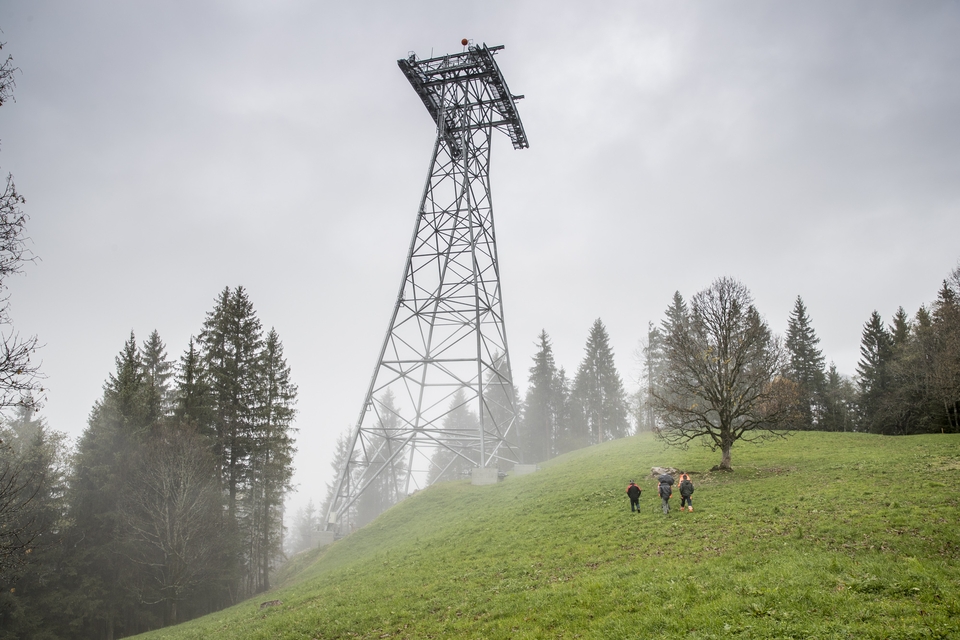
During excavation work for the construction of the pylon, the top and bottom soil was re-cultivated. The meadow was restored to its original state using the appropriate seeds. Part of the area can begrazed with sheep for a short period of time.

Jungfrau Railway Gallery and blue runway. The embankment is secured with jute nets and anchors. First comes the dung, then the net, which will be covered over in time.
He was also often to be found at the Eigergletscher collecting seeds. There are alpine seed mixes to buy, but they do not contain everything that grows naturally on the Eigergletscher. «To ensure that what is native up there will keep on growing there, we have collected the seeds at different points in time, so that we can cover the entire range of existing plant species». Added to this is the fact that it takes a long time for nature to regenerate itself at over 2,300 metres above sea level: «everything grows more slowly and by mid-August it's already autumn here».
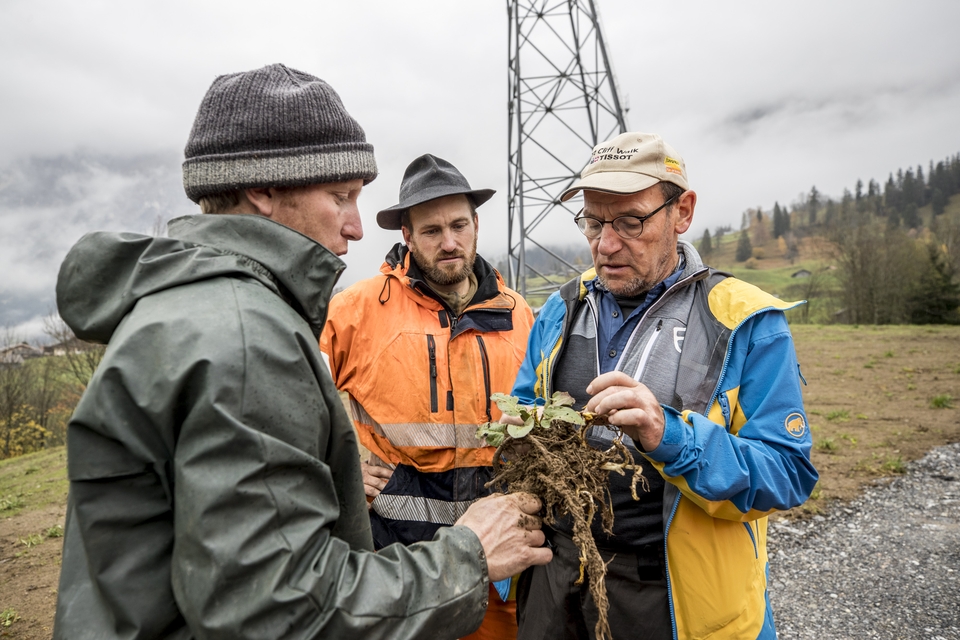
Martin Lutz checks the condition and growth strategy of the broad-leaved dock with Christian and Urs Zumbrunn from Zumbrunn Bau AG.
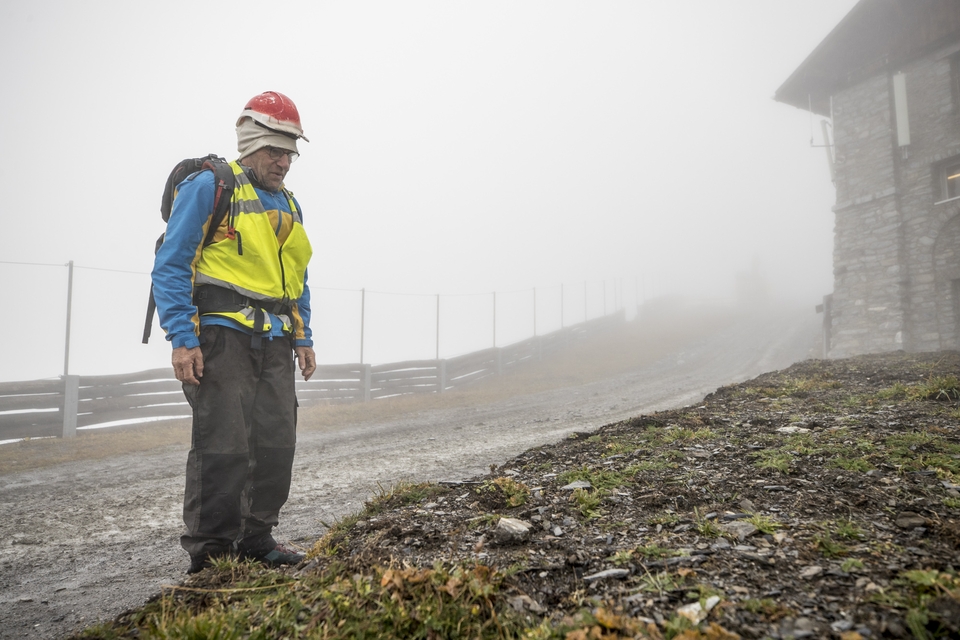
Martin Lutz behind the Jungfrau Railway workshop with a topsoil tip. The company Ghelma AG planted seeds here in early summer. This summer the vegetation has to be more luxuriant.

The plants on this clod of earth are white because it has been placed upside down. This way, no light could reach the plants.
Lutz describes the work he does with companies, local construction workers, and even the mountain communities and farmers as very exciting. «My studies naturally help me in conversation», explains the agronomist. In addition, a change in values towards greater environmental awareness has taken place in recent years and decades among all of them. But a clear division of roles is also important in when working in partnership: «How someone drives their digger is none of my business, but if they use it to cause damage to the landscape, then I intervene».
The 64-year-old's passion for nature and the landscape is tangible. No matter where he is: interventions in the landscape hurt him. «With my commitment and my work, I can at least intercept some of it». At the same time, he is not a «fundamentalist», because he knows that without tourism, Grindelwald for example would have to fear mass emigration which would have unforeseeable consequences for everyone.
So he prefers to invest his time in other measures. In Grindelwald in the direction of the First, there are possibilities to create areas for the «Glöggli Frog»– perhaps better known as the Midwife Toad – in which it can reproduce. This requires the dredging of ponds in which water can collect. And then you have to wait, «because it can take a certain amount of time for the toads to colonise the ponds», explains Lutz, who is already preparing the next meeting with the mountain communities to determine the locations for planting the new sycamore trees.
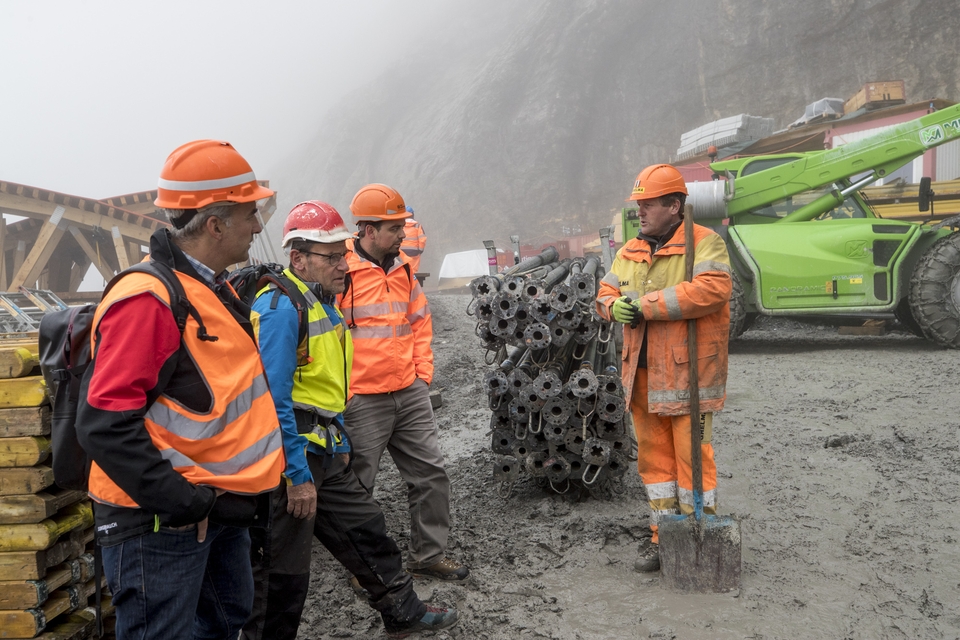
Martin Lutz in conversation with the foreman in charge, Christoph Schmid from Ghelma AG, at the Eigergletscher construction site. The exchange is good, not least thanks to the creativity and good ideas of the foreman.
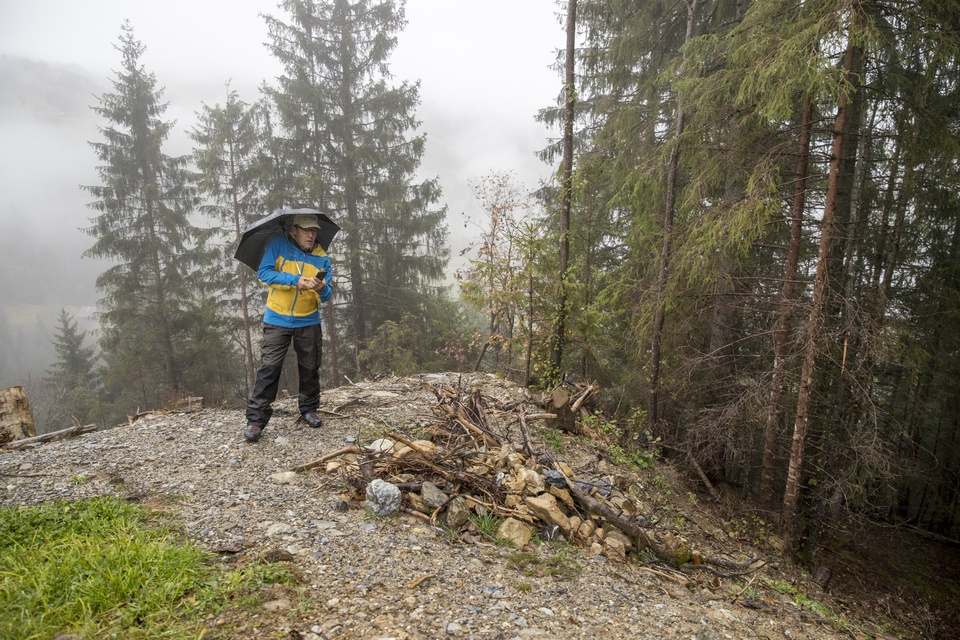
This pile of stones at the edge of the forest at pylon 2 can serve as a biotope. What may seem like disorder to people is important for nature.
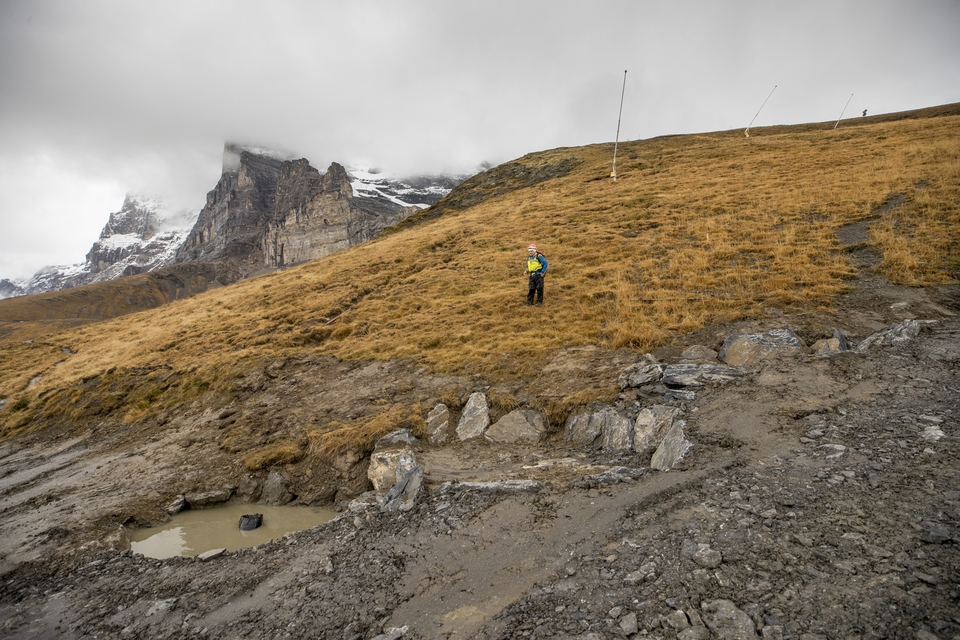
Water can be dammed and erosion prevented with pools like this one on the blue runway. The ponds are used by frogs, Alpine newts or common toads for spawning.
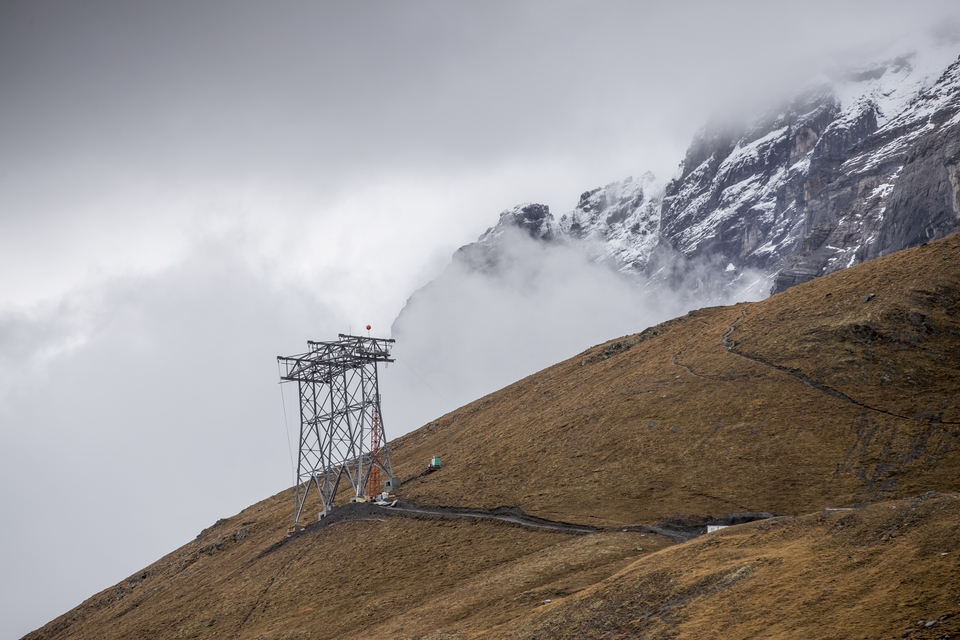
The access road to pylon 7 is partly covered with clods of earth that have survived. Since everything grows slowly at over 2,000 metres, it will take a long time before the recultivation is successfully completed.
